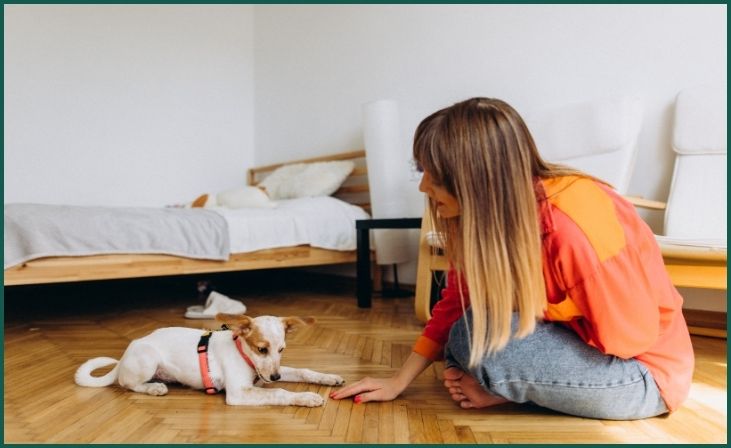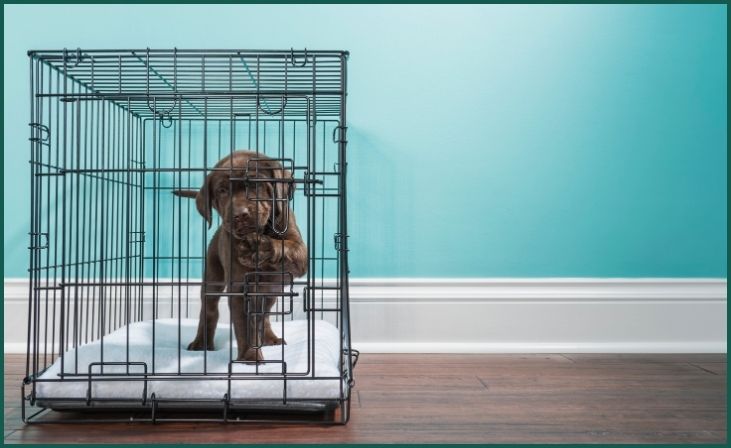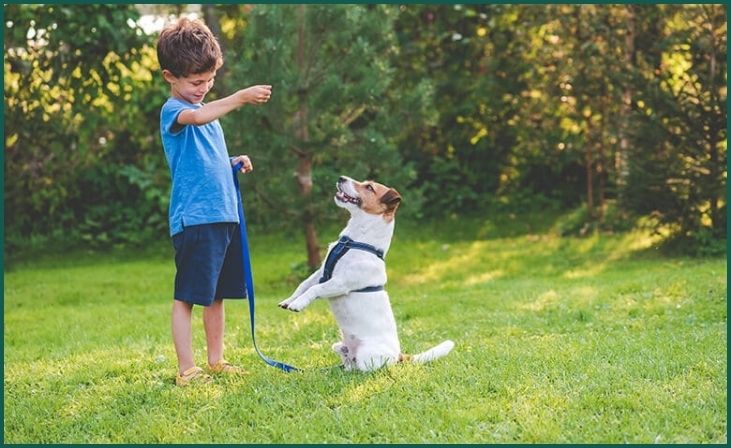Welcoming a new puppy into your home marks the beginning of an extraordinary journey filled with love, joy, and companionship. As a new dog owner, embarking on this adventure brings excitement and responsibility in equal measure. The introduction of a puppy not only adds warmth to your household but also necessitates a commitment to nurturing and training. Understanding the importance of laying a strong foundation through proper training is paramount. In this guide, we’ll delve into the essential steps required to ensure your puppy grows into a well-behaved and happy adult dog. From basic obedience commands to socialization skills, each aspect of training contributes to fostering a harmonious relationship and a lifetime of cherished memories.
Table of Contents
ToggleMost Important Things to Teach A Puppy
1. Basic Obedience Commands

Teaching your puppy basic obedience commands is essential for effective communication and establishing your role as the leader. Commands like sit, stay, and come not only enable you to manage your puppy’s behavior but also ensure their safety in various situations. For instance, teaching your puppy to sit on command can prevent them from jumping on guests or running into dangerous situations. Consistency and positive reinforcement are key to successful training. Use treats, praise, and patience to encourage your puppy to learn and obey these commands. Start with short training sessions in a distraction-free environment, gradually increasing the difficulty as your puppy progresses. With consistent practice and gentle guidance, your puppy will soon master these essential commands, laying the groundwork for a well-behaved and obedient companion.
2. Socialization Skills
Socialization is crucial for puppies to develop into well-adjusted adult dogs. Exposing your puppy to different people, animals, environments, and experiences from an early age helps prevent fearfulness and aggression. Socialization should begin as soon as you bring your puppy home and continue throughout their first year of life. Arrange supervised playdates with other vaccinated dogs, introduce your puppy to various sights and sounds, and take them on outings to different places. Positive experiences during the critical socialization period can shape your puppy’s temperament and behavior for life. By providing ample opportunities for socialization and ensuring positive interactions, you can help your puppy grow into a confident, well-socialized adult dog who feels comfortable and secure in various situations.
Also, Read – Pit Bull and Rottweiler Mix
3. Potty Training
Potty training is a crucial aspect of puppy care that requires patience, consistency, and a structured routine. Establishing a schedule for bathroom breaks helps your puppy learn when and where it’s appropriate to relieve themselves. Take your puppy outside to their designated potty area after meals, naps, and playtime, and be sure to praise and reward them for eliminating in the right spot. Supervise your puppy closely indoors and watch for signs that they need to go outside, such as sniffing or circling. Accidents are inevitable during the potty training process, so it’s essential to remain patient and avoid punishing your puppy for mistakes. With time and positive reinforcement, your puppy will learn to associate outdoor potty breaks with positive experiences and develop reliable bathroom habits.
4. Crate Training

Crate training provides your puppy with a safe and secure space of their own while aiding in housebreaking and preventing destructive behavior. Introducing your puppy to a crate should be done gradually, making it a positive and comfortable environment. Start by placing treats and toys inside the crate to encourage your puppy to explore and enter willingly. Feed your puppy their meals near the crate or inside it to create positive associations. Begin with short periods of confinement, gradually increasing the duration as your puppy becomes more comfortable. Avoid using the crate as a form of punishment, and never leave your puppy crated for extended periods. With patience and consistency, crate training can become a valuable tool for managing your puppy’s behavior and providing them with a safe retreat when needed.
Don't just scroll, subscribe!
BuzzTrail's unique web-stories are the cure for boredom you've been waiting for.
5. Leash Manners
Proper leash manners are essential for enjoyable walks with your puppy and ensure both their safety and yours. Start leash training early, using a lightweight leash and harness that fit comfortably. Begin by allowing your puppy to get used to wearing the harness indoors before introducing them to the leash. Encourage your puppy to walk beside you using treats and praise, rewarding them for walking calmly without pulling. If your puppy begins to pull on the leash, stop walking and wait for them to relax before continuing. Consistency is key to leash training success, so practice walking with your puppy regularly in different environments and gradually increase the duration and complexity of your walks. With patience and positive reinforcement, your puppy will learn to walk politely on a leash, making outings together a pleasurable experience for both of you.
6. Basic Manners and Behavior
Teaching your puppy basic manners and behavior is essential for fostering a respectful and harmonious relationship. Discourage undesirable behaviors like jumping, nipping, and excessive barking by redirecting your puppy’s attention and rewarding alternative behaviors. Provide plenty of appropriate chew toys to satisfy your puppy’s natural urge to chew and discourage destructive chewing on furniture or belongings. Reinforce polite interactions with people and other pets by rewarding your puppy for calm and gentle behavior. Consistency is crucial when addressing unwanted behaviors, so be patient and persistent in your training efforts. By setting clear boundaries and reinforcing positive behaviors, you can help your puppy develop good manners and become a well-behaved member of your household.
Also, Read – How to Massage a Puppy
7. Positive Reinforcement and Patience

Positive reinforcement is the most effective method for training puppies and building a strong bond based on trust and respect. Use treats, praise, and affection to reward your puppy for desired behaviors, such as sitting calmly or coming when called. Avoid punishment or harsh correction, as these can damage your relationship with your puppy and lead to fear or anxiety. Be patient and understanding as your puppy learns new skills, and celebrate their progress along the way. Training takes time and repetition, so be consistent in your approach and remain committed to your puppy’s development. By focusing on positive reinforcement and patience, you can cultivate a deep and lasting connection with your puppy while helping them become a well-behaved and confident adult dog.
Conclusion
In conclusion, training your puppy is a journey filled with rewarding moments and valuable lessons. By prioritizing patience, consistency, and positive reinforcement, you can set your puppy up for success and cultivate a strong bond built on trust and understanding. Remember that every interaction is an opportunity to nurture your puppy’s growth and development, both as a well-behaved companion and as a cherished member of your family. Embrace the challenges and triumphs along the way, knowing that the investment you make in your puppy’s training will pay off in a lifetime of shared adventures and unconditional love. Together, you and your puppy can embark on a journey filled with laughter, learning, and endless tail wags.
FAQs
What if my puppy doesn’t respond to training?
What if my puppy doesn’t respond to training?
If your puppy is struggling with training, reassess your approach and consider seeking guidance from a professional dog trainer. Sometimes, adjusting training methods or seeking personalized assistance can make a significant difference in your puppy’s progress.
Should I use punishment in training?
Should I use punishment in training?
Punishment can be counterproductive and damage the bond between you and your puppy. Instead of punishment, focus on positive reinforcement to encourage desired behaviors and address unwanted ones through redirection and gentle correction.

